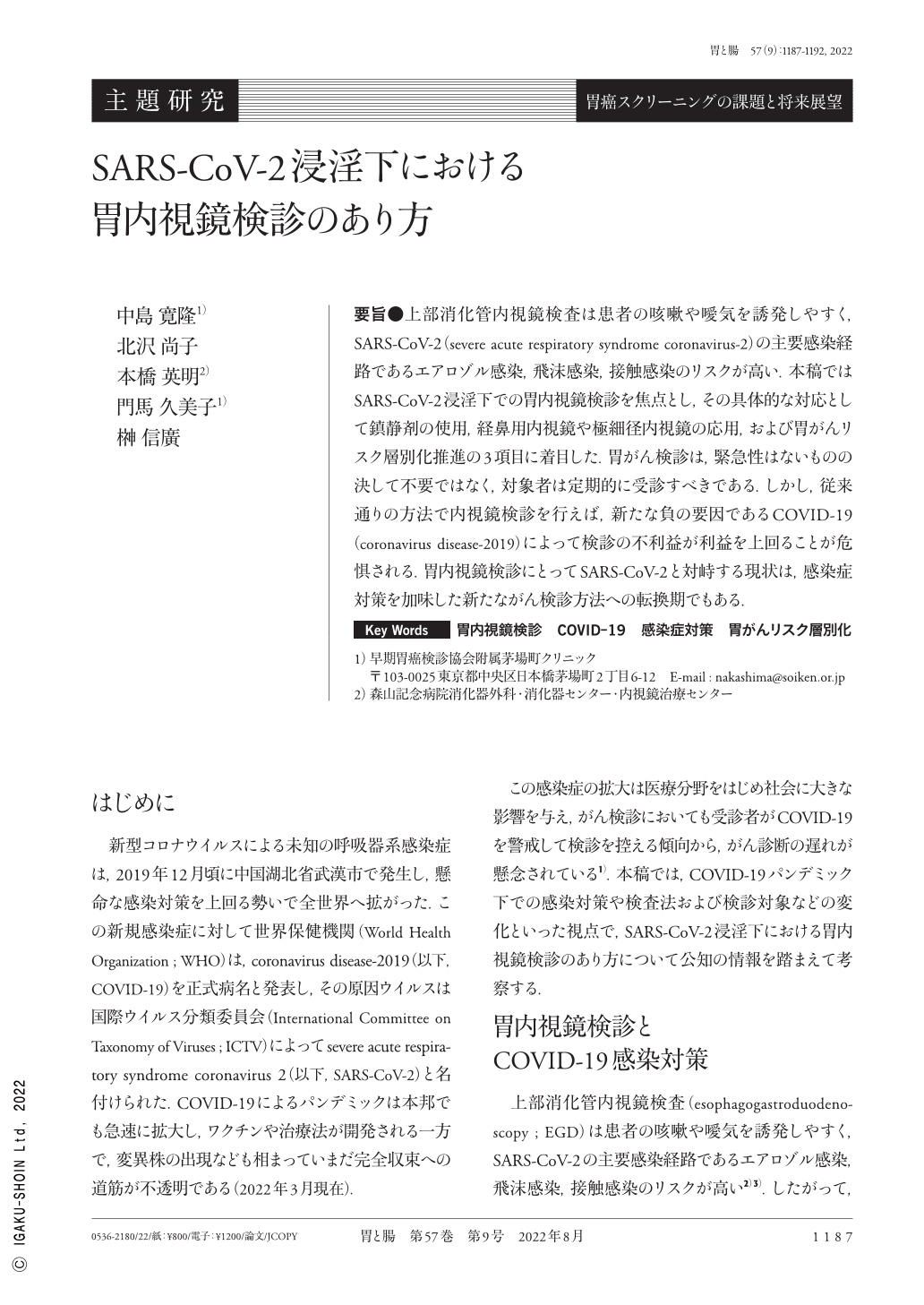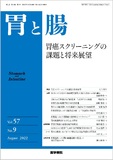Japanese
English
- 有料閲覧
- Abstract 文献概要
- 1ページ目 Look Inside
- 参考文献 Reference
要旨●上部消化管内視鏡検査は患者の咳嗽や?気を誘発しやすく,SARS-CoV-2(severe acute respiratory syndrome coronavirus-2)の主要感染経路であるエアロゾル感染,飛沫感染,接触感染のリスクが高い.本稿ではSARS-CoV-2浸淫下での胃内視鏡検診を焦点とし,その具体的な対応として鎮静剤の使用,経鼻用内視鏡や極細径内視鏡の応用,および胃がんリスク層別化推進の3項目に着目した.胃がん検診は,緊急性はないものの決して不要ではなく,対象者は定期的に受診すべきである.しかし,従来通りの方法で内視鏡検診を行えば,新たな負の要因であるCOVID-19(coronavirus disease-2019)によって検診の不利益が利益を上回ることが危惧される.胃内視鏡検診にとってSARS-CoV-2と対峙する現状は,感染症対策を加味した新たながん検診方法への転換期でもある.
An upper gastrointestinal endoscopy often induces coughing and belching in the examinee, and thereby increases the risk of aerosol or droplet formation, which is the primary mode of infection in SARS-CoV-2(severe acute respiratory syndrome coronavirus-2). This article focuses on endoscopic gastric cancer screening during the SARS-CoV-2 pandemic. Taking into consideration the various statements on infection control, the authors infer that sedation during endoscopy, application of nasal or ultrathin endoscopes, and gastric cancer risk stratification are key factors. Gastric cancer screening is not urgent but necessary, and people should undergo regular examinations. However, if endoscopic examination is performed by the conventional method, there are concerns that the disadvantage of SARS-CoV-2 would exceed the benefit of screening endoscopy. Thus, confronting SARS-CoV-2 is an opportunity to discuss an updated gastric cancer screening program that incorporates the control of this infectious disease.

Copyright © 2022, Igaku-Shoin Ltd. All rights reserved.


